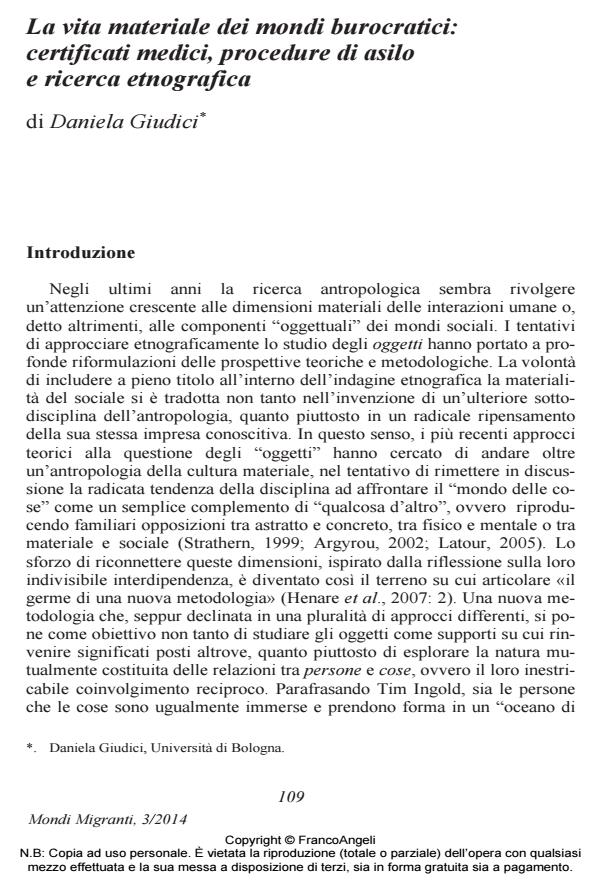The material life of bureaucratic worlds: medical certificates, asylum procedures and ethnographic research
Journal title MONDI MIGRANTI
Author/s Daniela Giudici
Publishing Year 2015 Issue 2014/3
Language Italian Pages 15 P. 109-123 File size 58 KB
DOI 10.3280/MM2014-003007
DOI is like a bar code for intellectual property: to have more infomation
click here
Below, you can see the article first page
If you want to buy this article in PDF format, you can do it, following the instructions to buy download credits

FrancoAngeli is member of Publishers International Linking Association, Inc (PILA), a not-for-profit association which run the CrossRef service enabling links to and from online scholarly content.
The ethnographic inquiry into everyday encounters between migrants and bureaucracies is confronted with the production of a multiplicity of official documents, which play a crucial role in migrants’ lives. A careful methodological revisit of the use of bureaucratic artefacts in the ethnographic research on migrations is therefore essential, not only in order to address the materiality of governance, but also in an attempt of exploring the potentials and limits of the contemporary anthropological approaches to the relations between humans and things. This paper builds on the variety of messages and intents conveyed by medical certificates in the context of asylum seeking in Italy, in order to reflect on the methodological entailments of the study of the social, political and affective dimensions of bureaucratic artefacts.
Keywords: Anthropology of documents, asylum, bureaucratic artefacts, ethnography, trauma, Italy.
- Cura e controllo al confine: scritturazioni e pratiche del sapere medico negli hotspot Jacopo Anderlini, in MONDI MIGRANTI 2/2018 pp.61
DOI: 10.3280/MM2018-002004
Daniela Giudici, La vita materiale dei mondi burocratici: certificati medici, procedure di asilo e ricerca etnografica in "MONDI MIGRANTI" 3/2014, pp 109-123, DOI: 10.3280/MM2014-003007